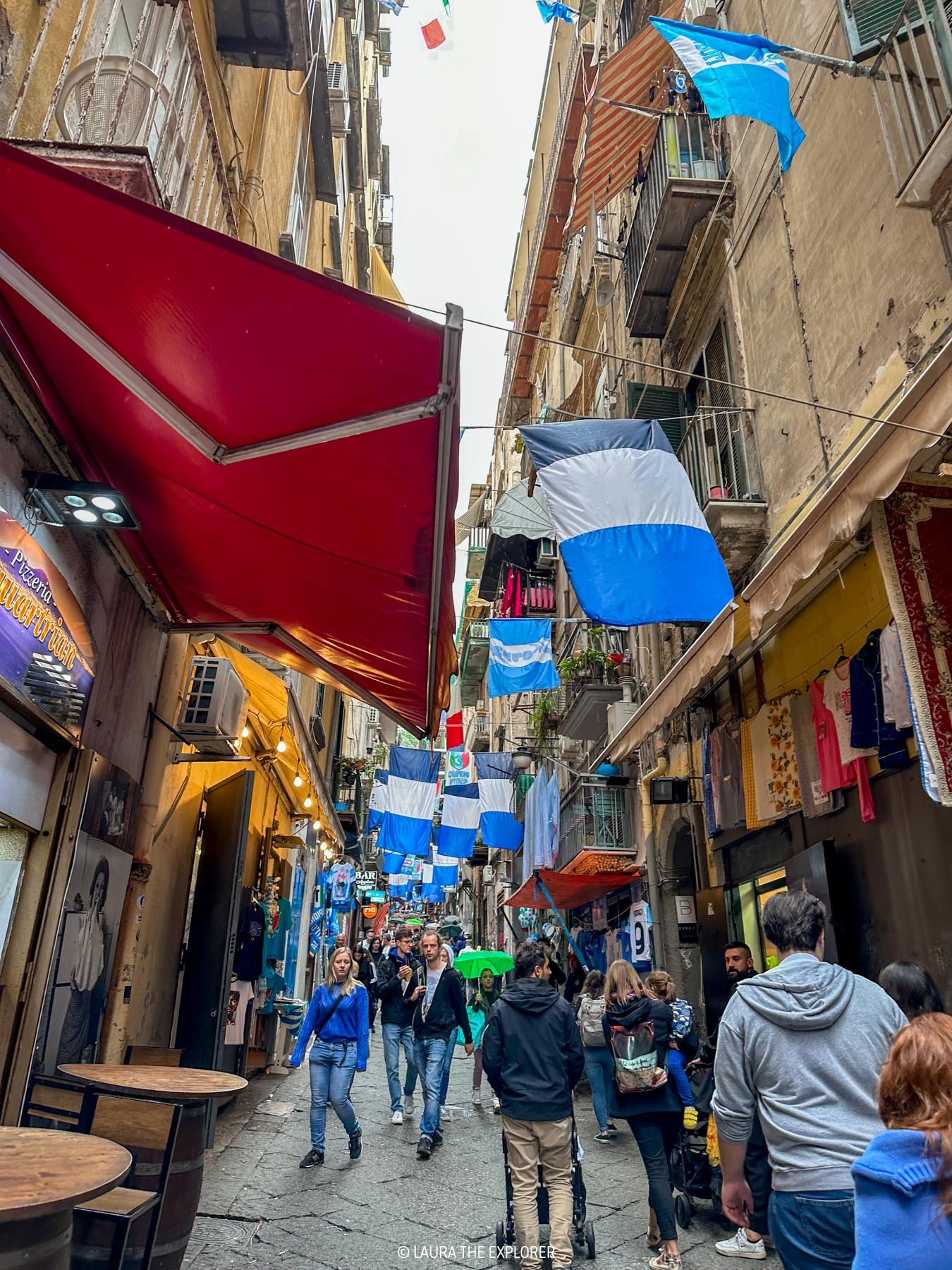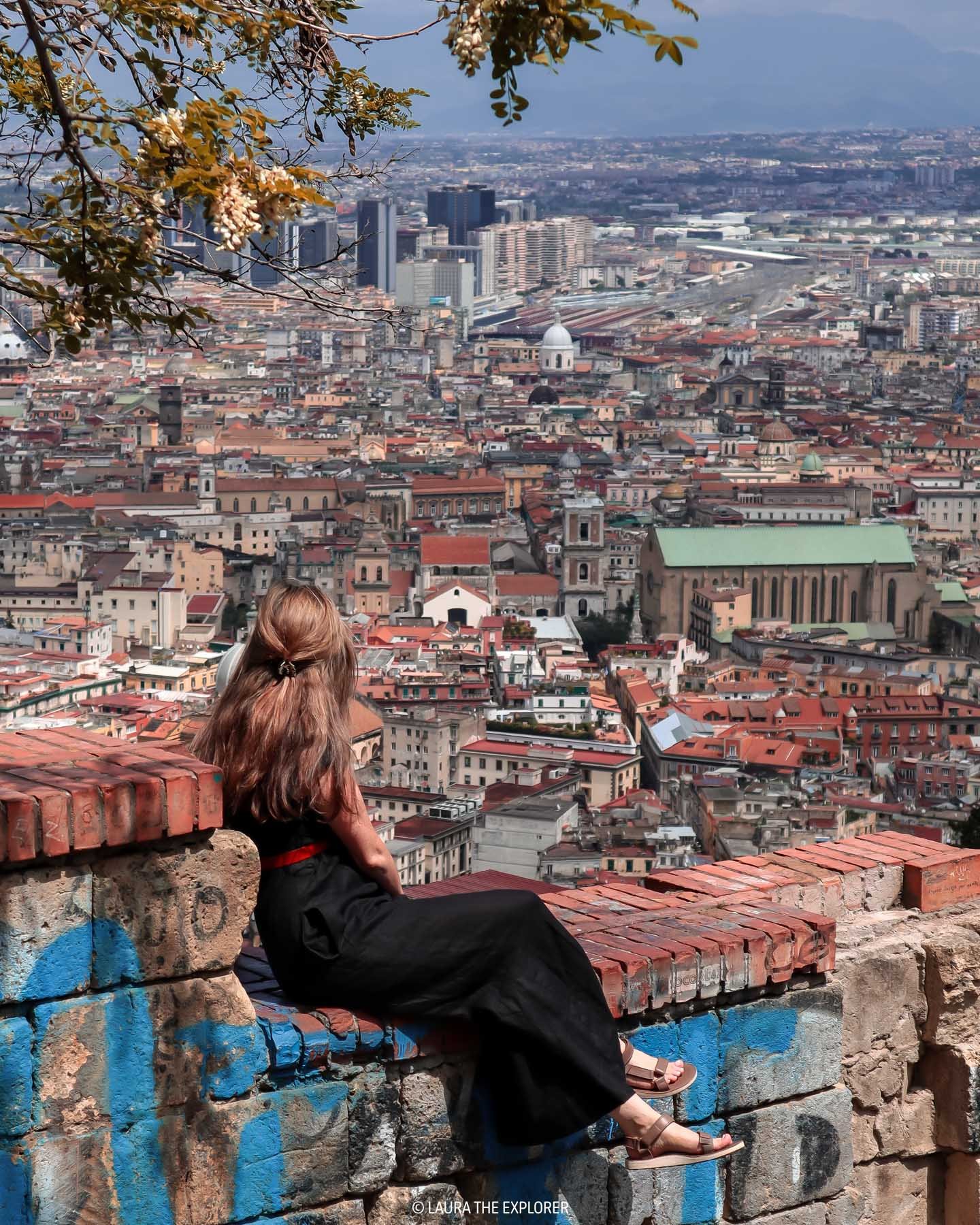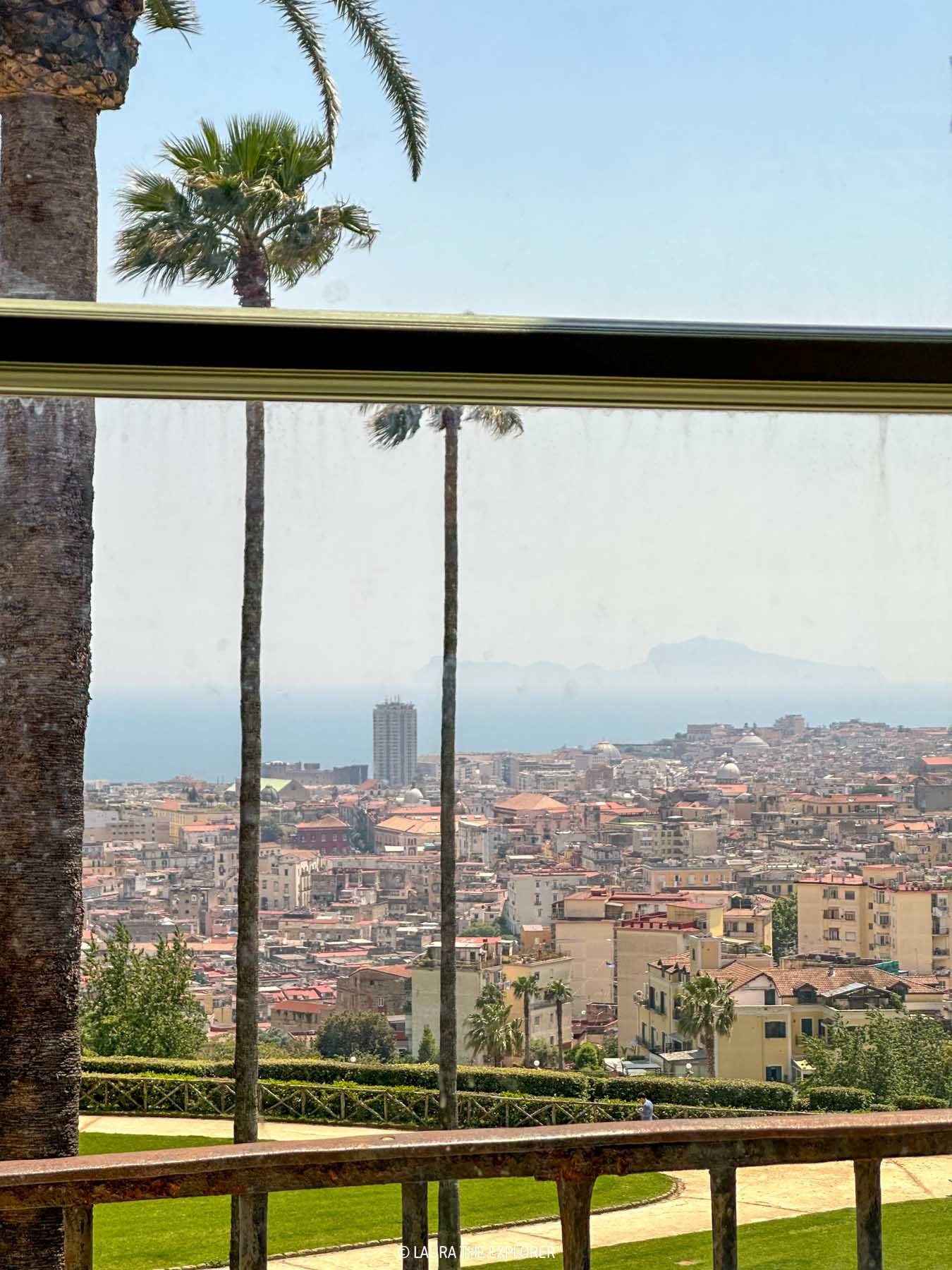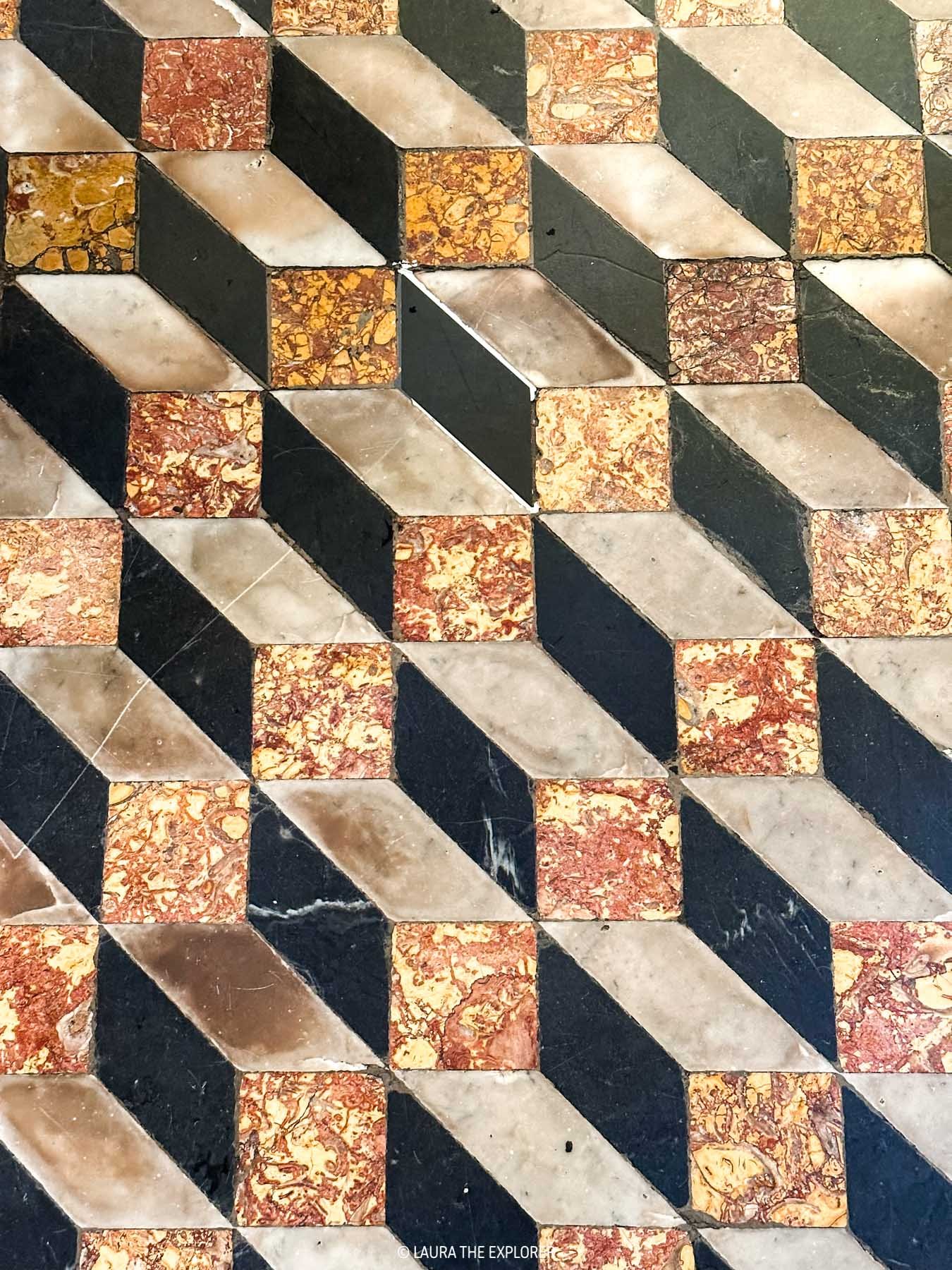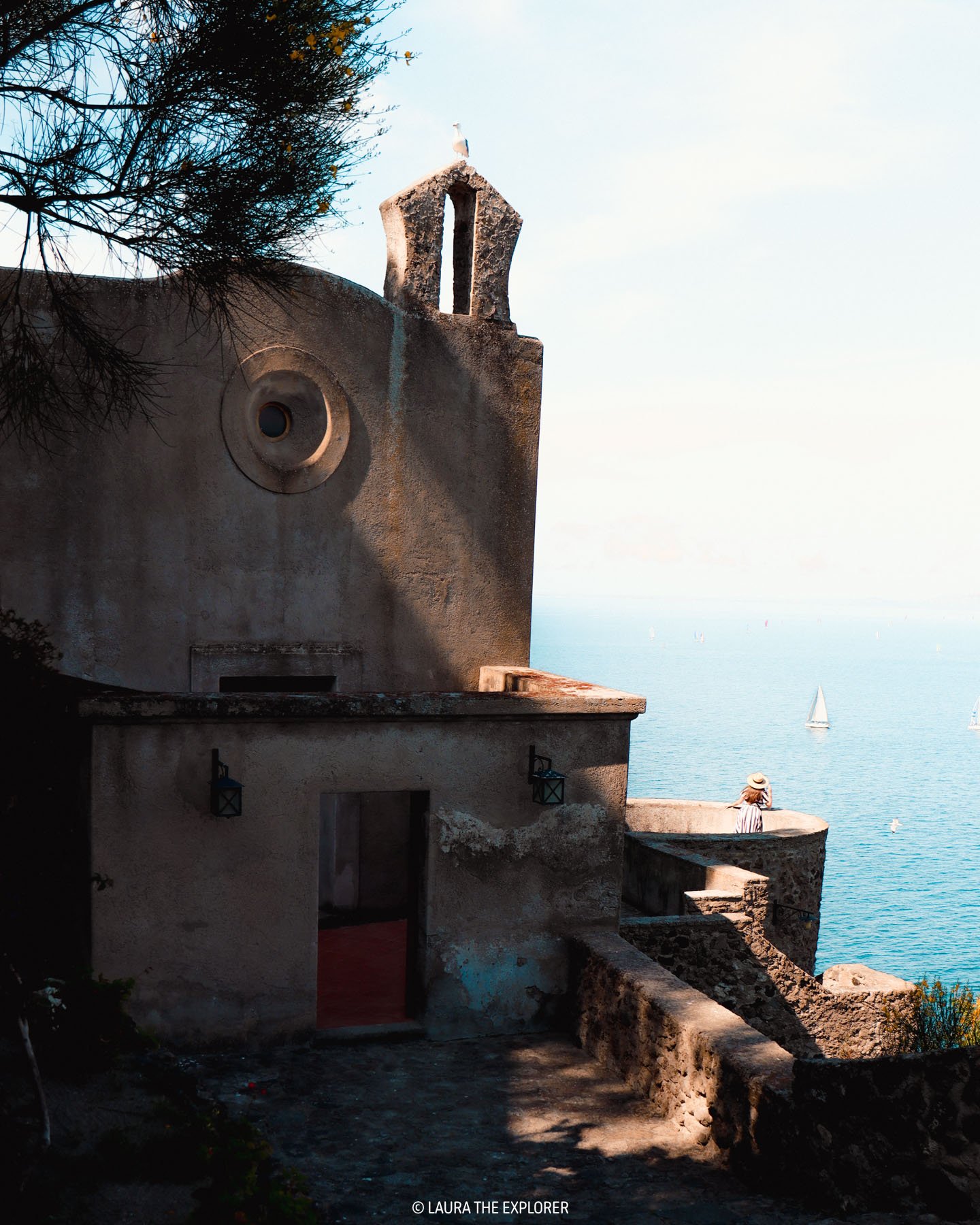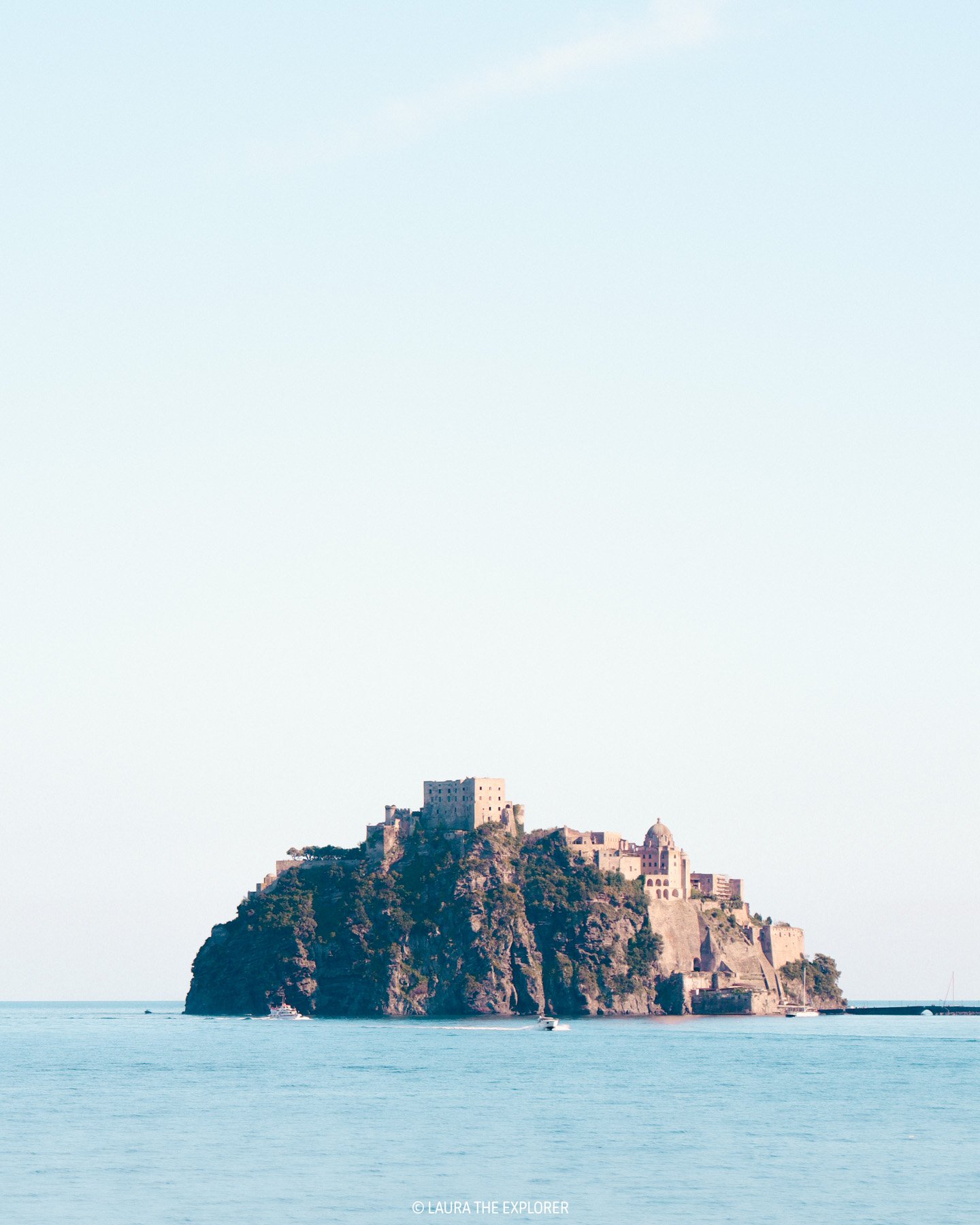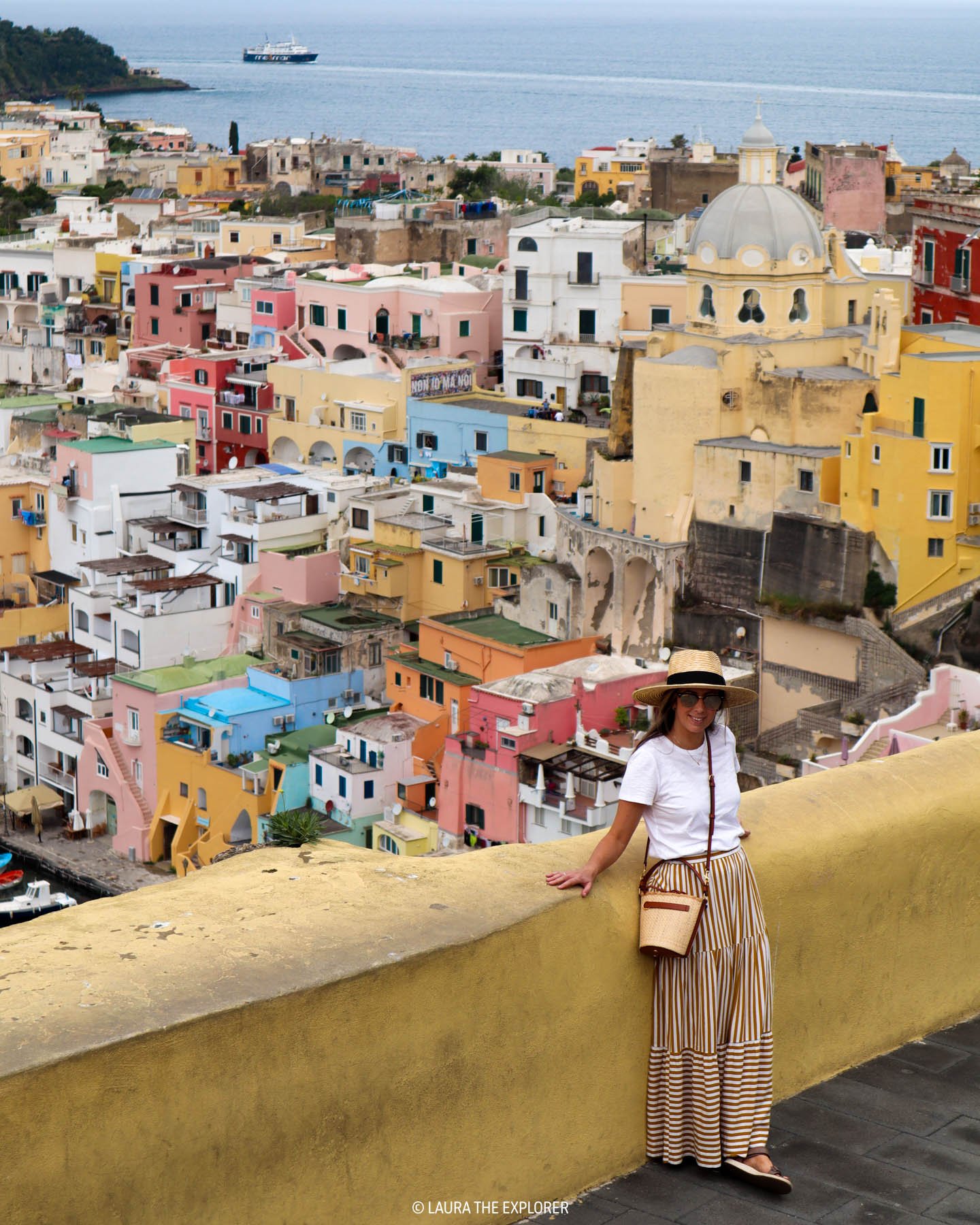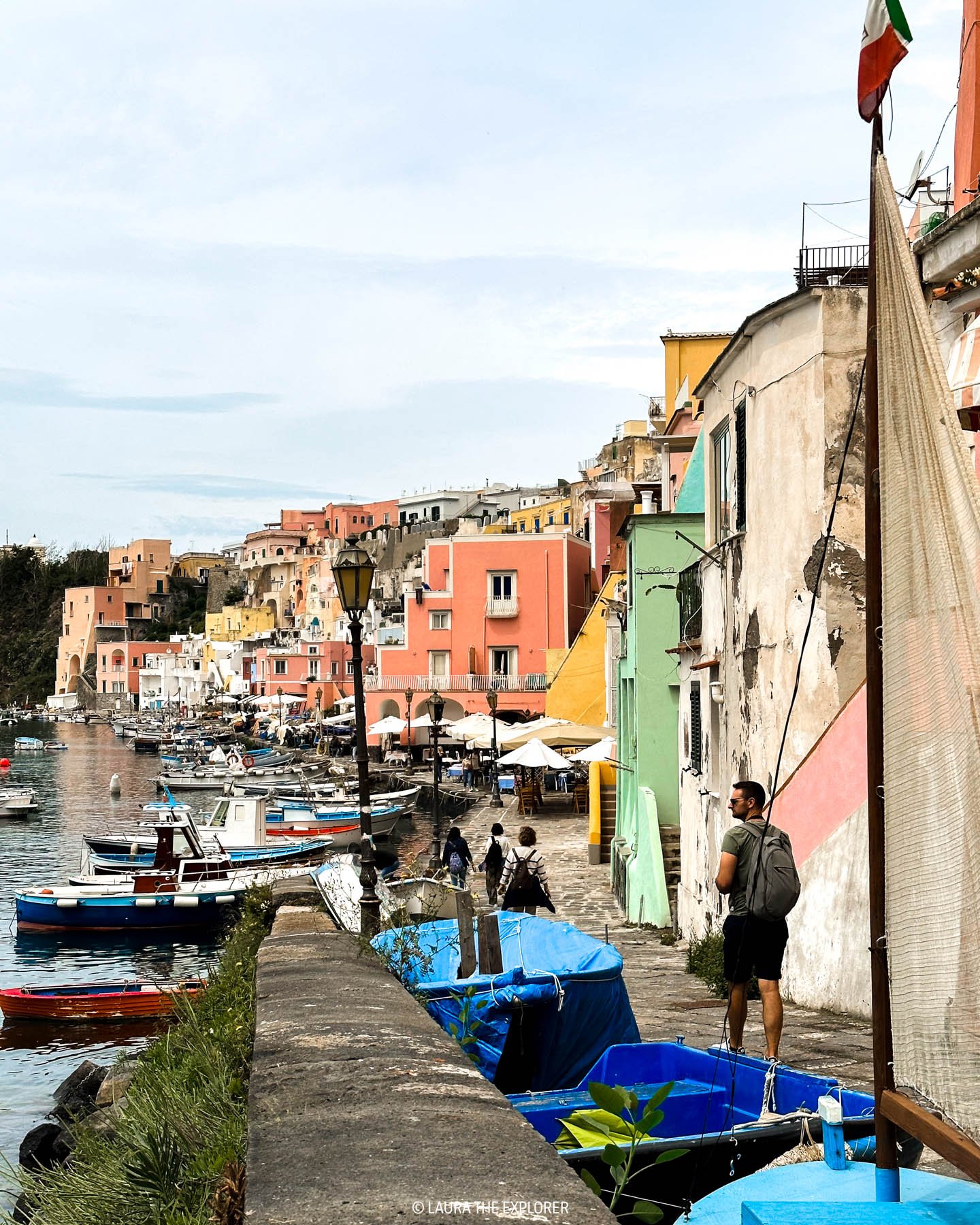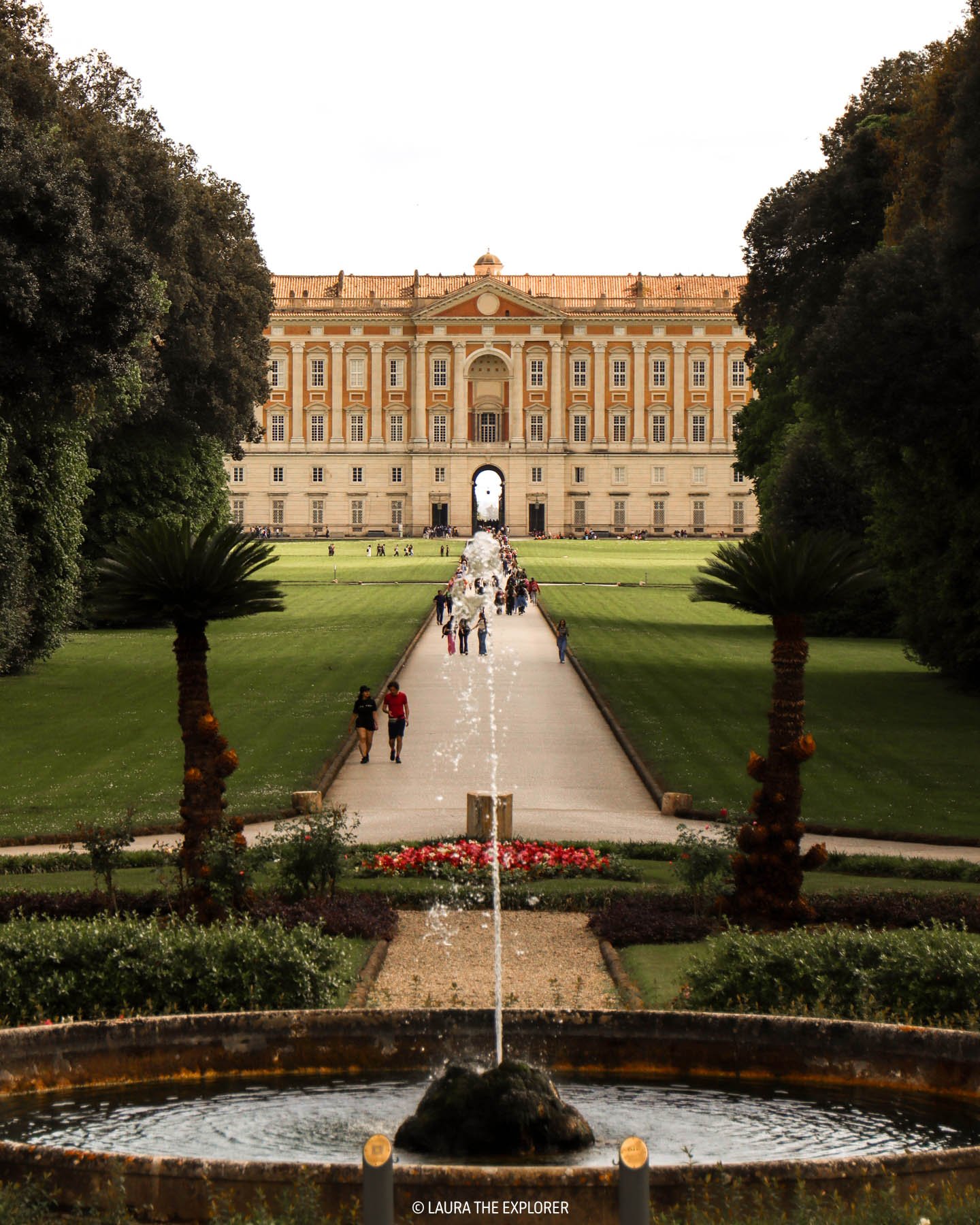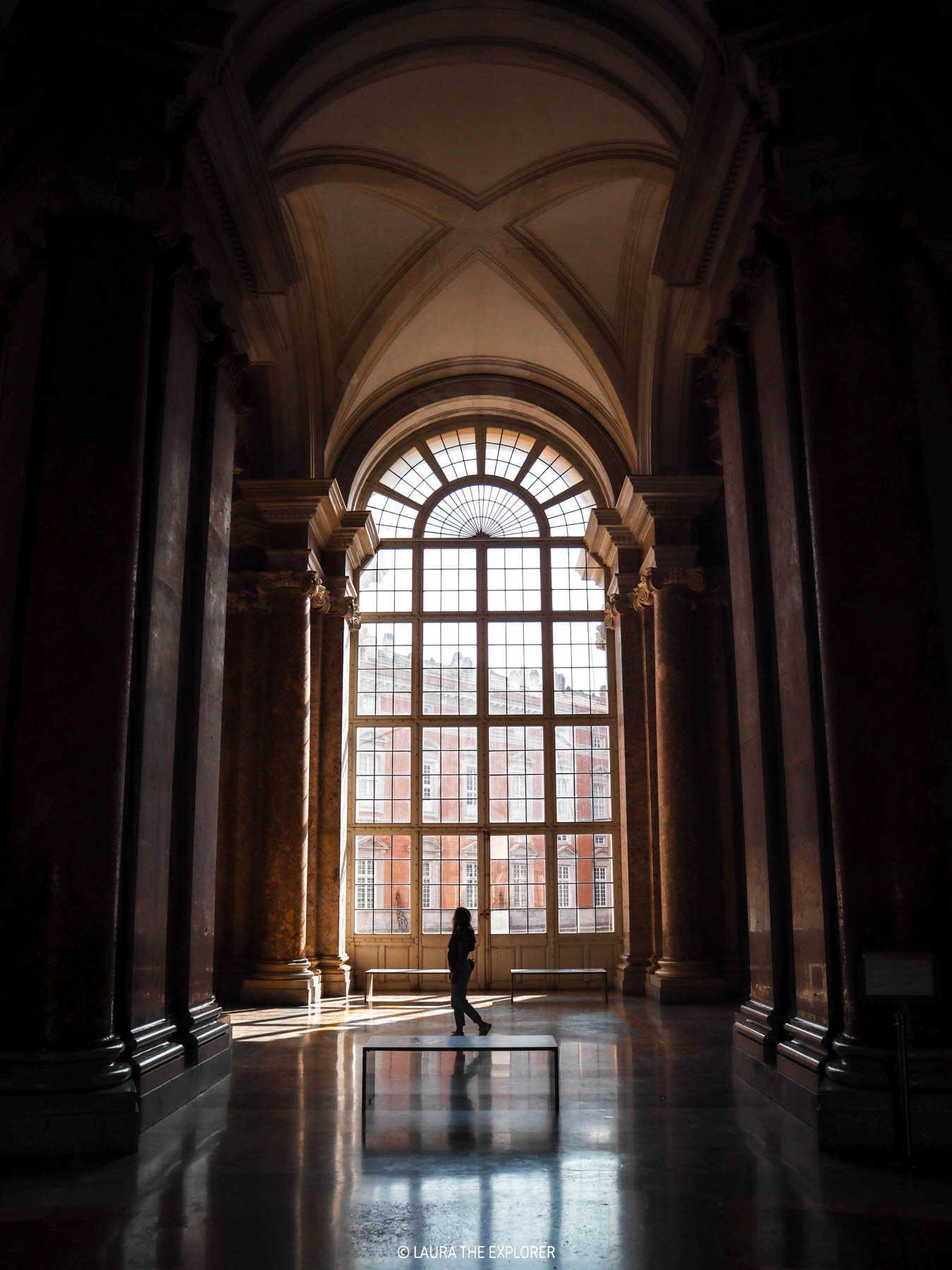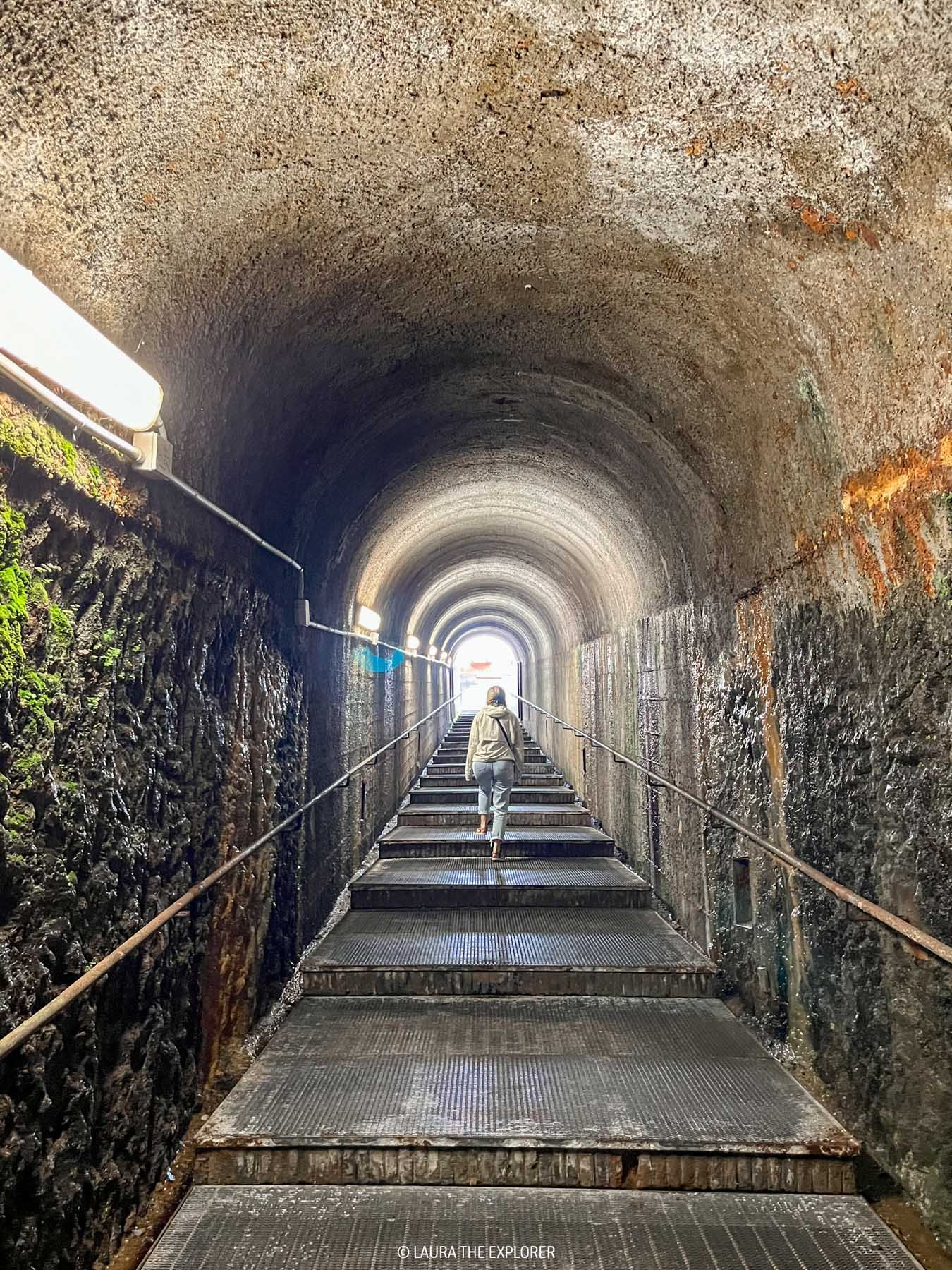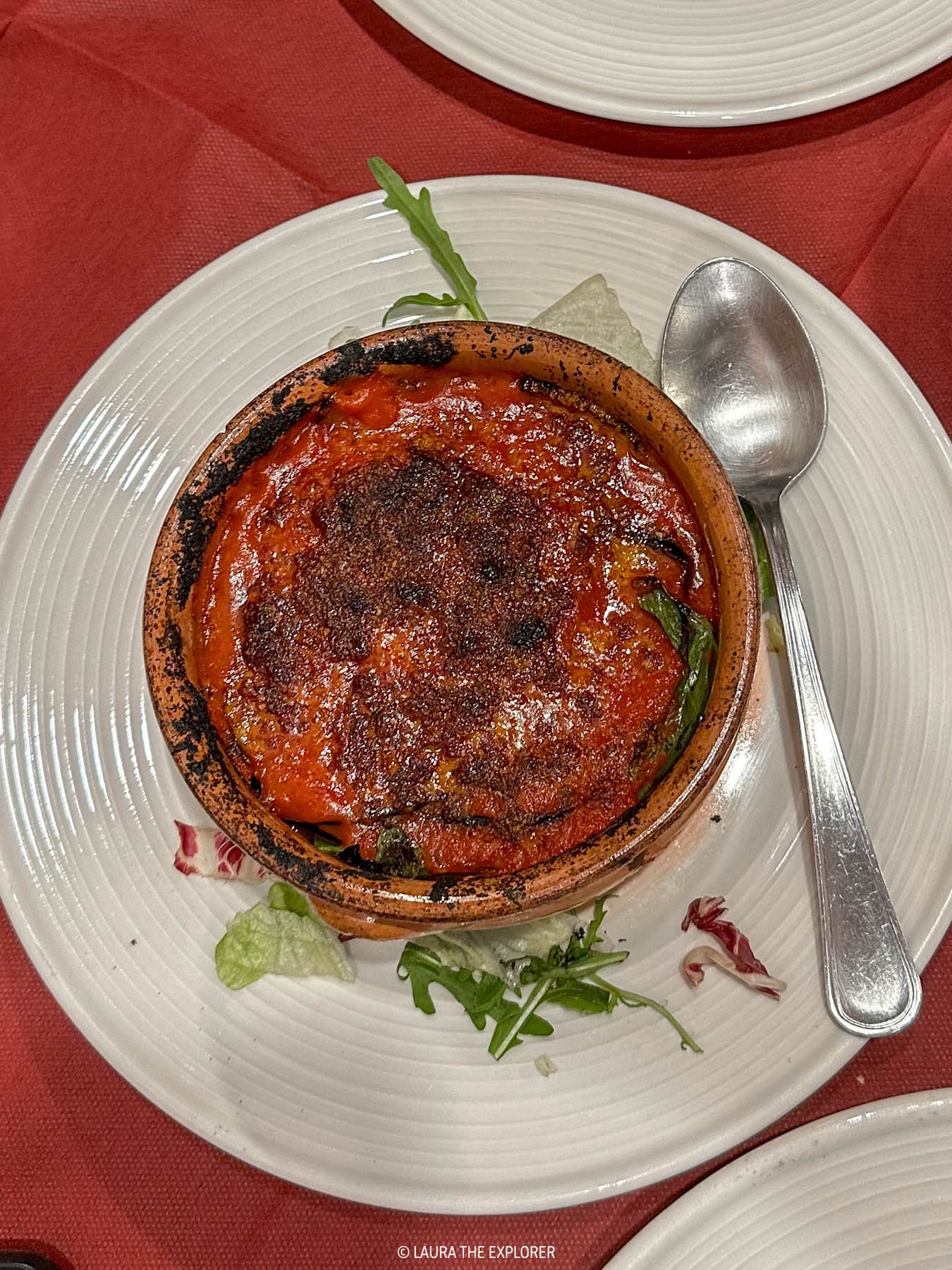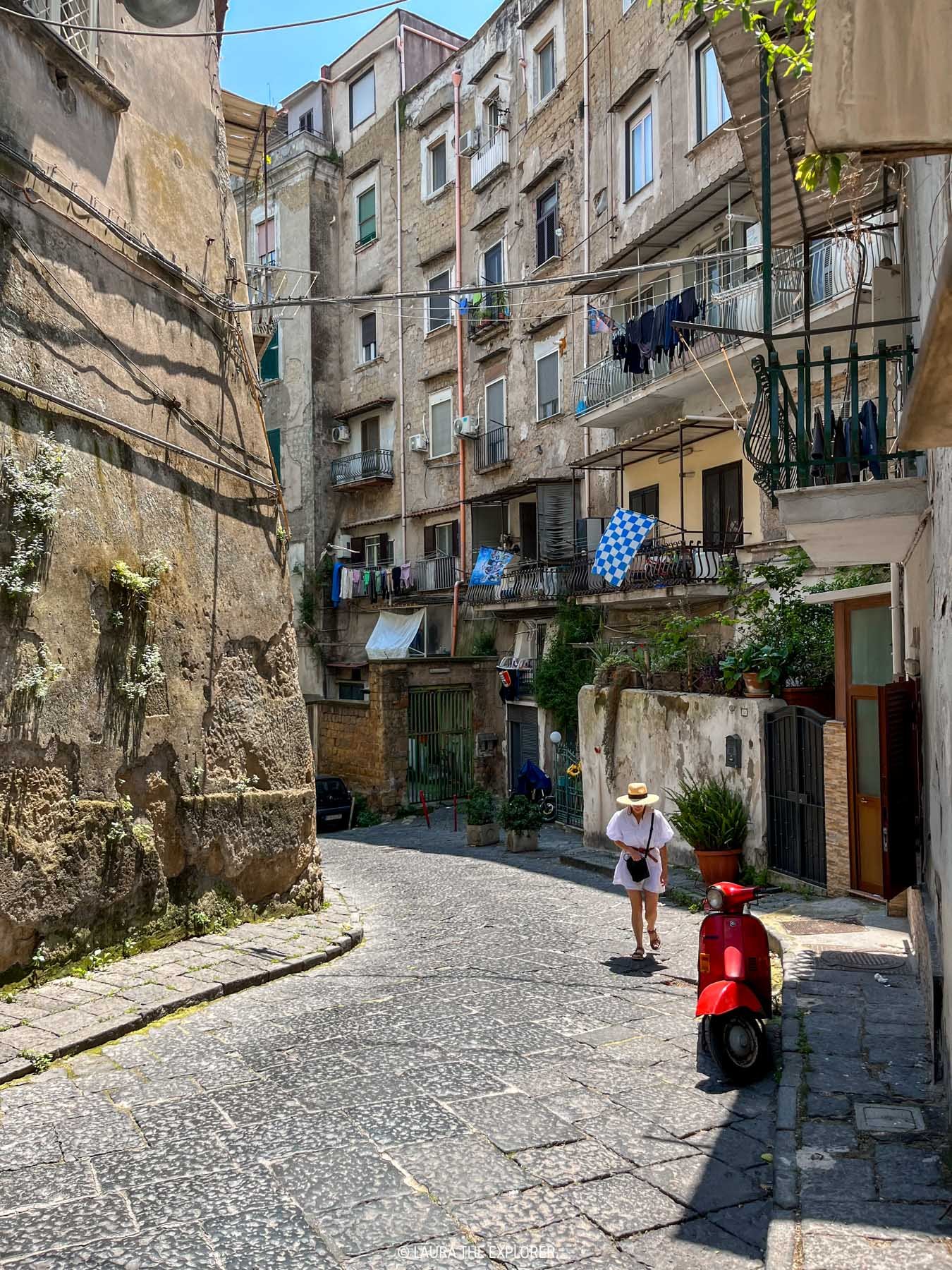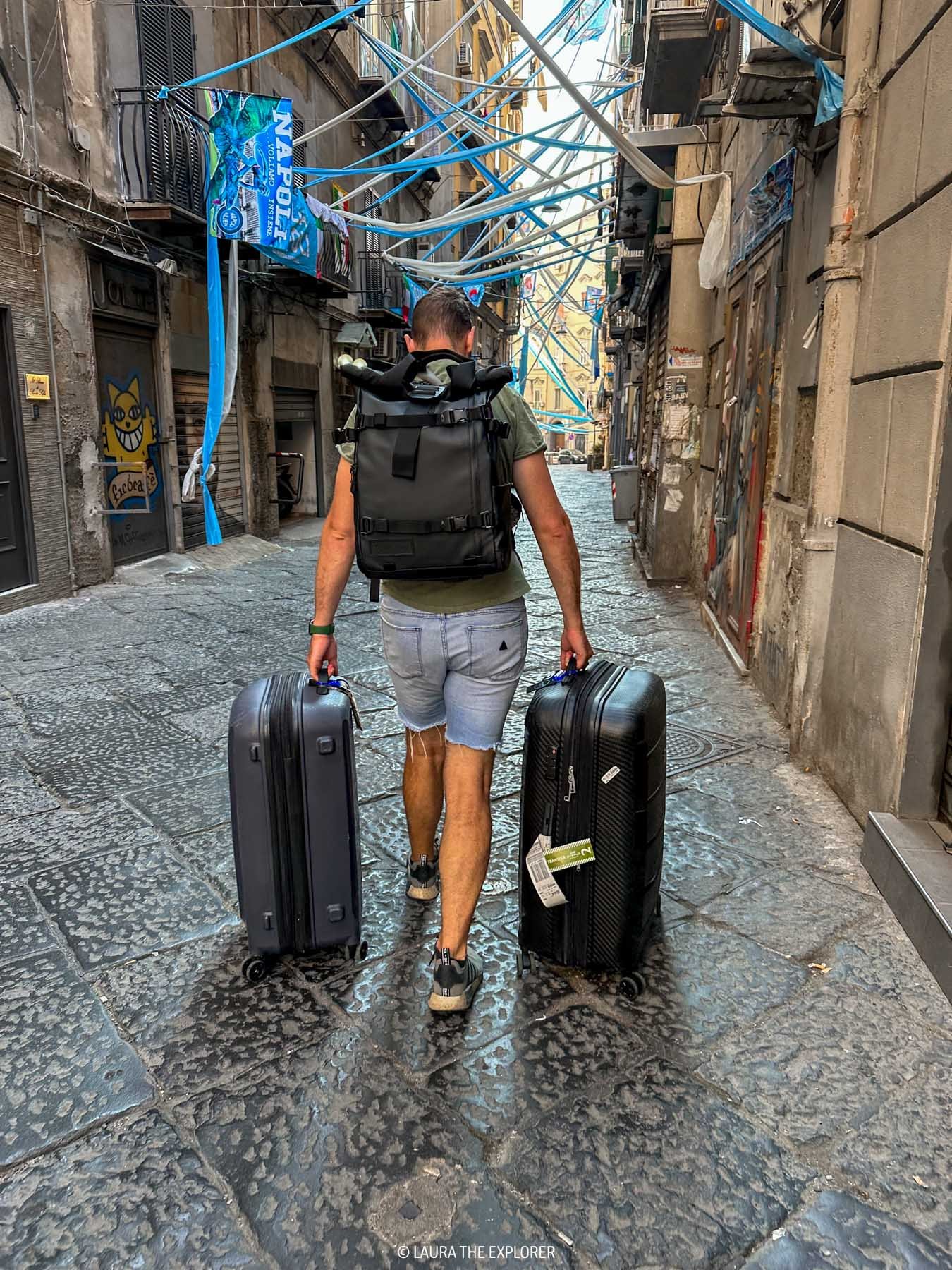The Perfect 2 Days in Naples - Itinerary & Travel Guide
When we first told family and friends that we were going to spend a month living in Naples, the first reaction was typically “Really? Are you sure…?”
Thanks to it’s history tainted by the mafia and piled up rubbish, Naples’s now-undeserved reputation still unfortunately lingers to this day.
However, not only were we happy to discover the Naples has shed this old visage, but, the low number of tourists at even the major sights made this city a delight to explore. More than just famous pizzerias, though the pizzas truly are outstanding, there are plenty of hidden gems to discover in and around Naples.
And there’s a wealth of history to uncover in the city of Naples, or Napoli as it’s called in Italian. Sure, there’s few cities that can rival Rome for history, but Naples is no bore.
From its founding by the Greeks in 860AD (as Parthenope), to becoming the spa resort of the Romans, to the Byzantines, the Goths, the Swabians, the Angevins, the Spanish, and more, each period has left their own historical mark on the city.
So, look beyond the graffiti, as Napoli is no longer just a stopover on the way to the Amalfi Coast or a base for visiting Pompei, Naples deserves time on your itinerary in it’s own right. Here is my guide to the spending the best 2 days in Naples.
A quick heads up: this post may contain affiliate links.
I only ever recommend products or services that I use (and love!) personally. You won’t pay anything extra if you make a purchase through one of these links, but we’ll get a small commission which helps keep the blog running. Thanks for your support!
How to Spend 2 Days in Naples
2 Day Itinerary
The best daytrips from Naples
Tips for visiting Naples
How to get to Naples
How to get around Naples
Where to stay in Naples
What to take to Naples
My Ultimate Naples Map
2 DAYS IN NAPLES ITINERARY
There are a ton of things to see and do in Naples, so packing everything into two days is no small feat! The intent of this itinerary is to give you a list of things to do each day - pick and chose what you want to see based on your interests.
As a means of grouping nearby sights together and to minimise travel time, I’ve arranged it so that everything south and west of Via Toledo is on day one, and everything north and east of Via Toledo is on day two.
DAY 1 ITINERARY
Starting point: Toledo Metro Station, centrally located on yellow Linea 1, which zig zags it’s way through the city.
THE SPANISH SQUARTER & MARADONA MURAL
Heading out from Toledo station, start the day by exploring the Quartieri Spagnoli (Spanish Quarter). This old suburb, nestled below Castel Sant’Elmo (where the itinerary ends the day), is made up of narrow sloped streets that are full of charm and character. Be sure to hunt out the Maradona Mural. A uniquely Naples attraction, this football mad city loves to display it’s passion and support for it’s team and this shrine to Argentinian Maradona (who played for Napoli) is the epitome of their love. As you explore, grab an espresso and a sfogliatella or fiocco di neve (local pastries) from one of the many bars that line the steps and footpaths of the quarter.
GALLERIA UMBERTO I & TEATRO DI SAN CARLO
Cross Via Toledo and enter Galleria Umberto I. This ornate 19th century shopping mall now features the like of Zara, Sephora & McDonald’s, but the beautiful architecture and intricate mosaic floors are worth passing through to appreciate. Down the stairs of the south entry you’ll find the opulent Teatro di San Carlo, the 18th century opera house that offers both tours and performances.
CASTEL NUOVO
If time allows, detour left to visit the impressive Castel Nuovo (New Castle). This medieval fortress, often referred to as Maschio Angioino (Angevin Keep), was commissioned by Charles I of Anjou. Originally built in 1282, and rebuilt in 1479, it has been the royal residence for various Kings and Queens of Naples.
PIAZZA DEL PLEBISCITO
Head back past the theatre and into Piazza del Plebiscito, Naples’ main square that’s bordered by the Royal Palace of Naples and the Basilica of San Francesco di Paola and it’s grand porticoes. From a tribute to new Italian Emperor following the unification of Italy, to shockingly, a public parking lot (!!), the space is now thankfully restored as a picturesque public square, even hosting the occasional open-air concert.
If you’re getting a bit hungry at this point, pop into Gran Caffe Gambrinus or Il Vero Bar del Professore on the corner of the square for another espresso and a babà (rum soaked sponge) - I’m a huge fan of the pistachio version!
ROYAL PALACE OF NAPLES
In need of an upgrade from the Castel Nuovo, the Palazzo Reale di Napoli (Royal Palace of Naples) was built in the 17th century for the House of Bourbon, until their relocation to Caserta in the 18th century. Featuring multiple wings, a great hall, theatres, chapels, and many statues, the palace benefited from the Napoleonic occupation with luxury goods, and more recently, the Biblioteca Nazionale Vittorio Emanuele III (the National Library of Italy) was moved in. There are also frequent art exhibitions on display.
CHIAIA & CASTEL DELL’OVO
It’s now time to head along Via Chiaia to the well-heeled, waterfront neighbourhood of Chiaia. Pop into a bar for an aperitivo (we loved Il Vecchio Vinaio Prosciutteria) or simply wander along the waterfront. Be sure to check out Castel dell’Ovo - the oldest castle in Naples. First built in the 1st century BC, it’s located in the spot where the Greeks first founded the original city of Naples. Unfortunately it’s currently closed for renovations, but it still looks pretty perched at the end of the Lungomare.
From Chiaia, take the funicular up the hill to the Vomero neighbourhood, or if your legs are feeling up to it, climb the steps up through character-filled streets and alleys of Petraio neighbourhood.
CASTEL ST ELMO & CERTOSA DI SAN MARTINO
At the top you’ll find some of the best viewpoints of Naples. First, head into magnificent Castel Sant’Elmo. This star-shaped fortress dates back to 1275 and the reign of Charles of Anjou. Throughout it’s history serving military, defence and administration purposes, the castle has served as an imposing feature in Naples’ landscape. Now a musuem and exhibition space, the top of the castle walls offer some of the best panoramic views of the Bay of Naples and Mt Vesuvius.
Tucked down below the castle is Certosa di San Martino (St Martin Charterhouse). The former monastery is now an art musuem, famous for it’s picturesque cloisters.
END THE DAY
When it’s time for dinner, either take the sprawling staircase from Belvedere San Martino (St Martin Viewpoint) back down to Quartieri Spagnola and seek out one of it’s many bars and restaurants, or catch the Metro Linea 1 from Vomero down to Materdei and head to epic pizzeria Starita.
DAY 2 ITINERARY
Starting point: Capodimonte Museum, a 15 minute bus ride from Dante or Museo metro stations
REGGIA DI CAPODIMONTE
Start the day at Reggia di Capodimonte (Palace of Capodimonte), set in a beautiful park overlooking the city of Naples. The former royal summer residence of Bourbon Kings, the Reggia di Capodimonte is an ornate, architectural palace that’s now home to an impressive art collection from the Farnese family. The grounds and general exhibits can be accessed as you please, but as you’ll need to reserve a timeslot to access the royal apartments and the National Gallery, head in their first to secure your spot.
COMPLESSO MONUMENTAL SANTA CHIARA
After wandering the royal palace, take the bus back down to Piazza Dante from where it’s a short walk to Complesso Monumental di Santa Chiara (Santa Chiara Religious Complex). First head into the impressive Basiica before it closes over lunch. Built in the 14th century, the basilica is the resting place of various Naples’ royals, including King Robert of Anjou and Bourbon King Francis II. Then, visit the Chiostro Maiolica (Majolica Cloisters). These picturesque gardens feature beautifully painted tiles with scenes in vibrant blues, yellows and greens.
SPACCANAPOLI
After a busy morning, grab some lunch on nearby Spaccanapoli. Known as the street that cuts Naples, it’s a combination of streets including Via Benedetto Croce, Via San Biagio Dei Librai and Via Forcella that run east/west through the city. Don’t use the location marked in Google Maps - it’s not correct! Make sure to look out for Spaccanapoli when you’re up at Castel Sant’Elmo on Day 1.
Full of shops, restaurants, and bars, Spaccanapoli is the vibrant heart of the UNESCO World Heritage-recognised Centro Storico (historic centre). From Piazza del Gesù, I’d head to the Spaccanapoli branch of Tandem for the most delicious ragu-filled breadstick (I’m still drooling over it!). Alternatively, pick up a cuoppo of delicious deep-fried seafood or vegetarian morsels, all wrapped up in a serving cone.
CAPELLA SANSEVERO
The Capella Sansevero (Sansevero Chapel) might be one of the most beautiful rooms I’ve ever visited, especially as far as Rococo art goes. A private chapel and art collection, this popular attraction is not included in the Artecard (details down below) and tickets for a specific timeslot needs to be reserved 3 days in advance. It’s well worth the effort though, as the level of skill and detail shown in the marble carvings is almost incomprehensible, for even the non-religious, the veiled Christ artwork is bound to take your breath away.
No photos are allowed inside, so these are of some postcards I picked up on my visit.
DUOMO DI NAPOLI
From Capella Sansevero, detour through Via San Gregorio Armeno, also known as Christmas Alley, for all the Christmas nativity decorations you could ever imagine. Then, head down Via dei Tribunali on your way to the Duomo - be sure to keep an eye out for Naples’ own Madonna di Banksy artwork, protected by glass on the side of a jewellery shop.
In a city full of churches and basicilas, the Duomo di Napoli (Cathedral of Naples) is still the pinnacle of Naples’ ecclesiastical architecture. Built in honour of the city’s patron saint, Saint Januarius, in the 14th century, this cathedral is most famous for housing the Miracle of the Blood. With a vial of blood that’s said to foretell a disaster in Naples, this curious Napolitano tradition - be it science or spiritual - is rolled out three times each year.
To finish day two, pick one of these two educational activites.
For history buffs and those fascinated with Pompeii & Herculaneum, head to the National Archaeological Museum.
For those wanting to see a different side of Naples - or inside the City of Naples, to be more exact - join a tour of Subterranean Naples.
ARCHAEOLOGICAL MUSEUM OF NAPLES
Head along Piazza Cavour to Museo Archeologico Nazionale di Napoli (National Archaeology Museum of Naples). This museum is the perfect accompaniment to a visit to Pompei and Ecolano (Herculaneum), as a good amount of the treasures discovered in these ash-covered towns is now located inside the museum.
From complete restorations of incredibly intricate wall mosaics, to priceless Farnese sculptures, to the curious phallic ‘secret’ room, there’s something for everyone in this museum. As citizens of the pretty ‘new’ country of New Zealand, discovering the wealth of history in the region (from the Bronze age, to the Greeks, and then the Romans) really fascinating for us!
Open til 7:30pm, explore until hunger calls and then wander down to Piazza Dante where you’ll find the old gates to the city and Antica Pizzeria Port’Alba - one of the oldest pizzerias in the city.
SUBTERRANEAN NAPLES
Alternatively, book a tour to see a complete different side of Naples - the underside - in Napoli Sotterranea (Naples Underground)!, located just around the corner from the Duomo on Via dei Tribunali.
This is one of the most unique experiences in Naples. Started by the Greeks, expanded by the Romans, and even inhabited by the city’s residents to escape bombing in WWII, this complex of extensive underground aqueducts and cisterns provide a completely different insight into how water was once supplied to the city. Walking above, it’s hard to comprehend the history that is sitting just a few meters down below!
Be aware that you will need to be mobile (there’s a few steps and small paths), and relatively comfortable with enclosed spaces - though alternative routes exist if claustrophobia causes issues.
Be sure to book tickets ahead of time (in your preferred language) on the official Italian site, or through Get Your Guide - Subterranean Tour, the only other offical reseller.
End the day, wander back past the Duomo for dinner at my hidden gem of a pizzeria, Insolito La Pizzeria Gourmet, or if you want to queue for something a little more well known, head south to L’Antica Pizzeria da Michele.
3 DAYS IN NAPLES - THE BEST DAYTRIPS FROM NAPLES
If you find yourself with a little more time in the fascinating city of Napoli, there is still plenty to discover in the surrounding area - from thermal-spring laden islands that are an antidote to the crowds of Capri, to palaces built to rival Versailles, here are some of my favourite daytrips from Naples.
DAY TRIP TO ISCHIA
One of the best things we did in our month in Naples was take a day trip to Ischia. Located in the Bay of Naples just off the Phlegrean Peninsula, the island of Ischia (pronounced iss-key-ah) is reached very easily by regular ferries running from central Naples. Covered in beautiful beaches, thermal hot springs, and an iconic castle perched on it’s own islet, you may even want to extend your trip for longer!
Buses circumnavigate the island in a big loop (running in both directions), so pick your desired destinations and visit them in either a clock-wise or anti-clockwise order.
NEGOMBO THERMAL PARK
About a half an hour ride from the port is Negombo Thermal Park & Spa is the most famous hydro-thermal park on the island of Ischia. Featuring a variety of pools, springs, gardens and spa services, Negombo is the perfect place for a relaxing day to recover from a big few days exploring Naples.
Book tickets to Negombo in advance, and be aware that it closes in May - much to our dispair!
GIARDINI LA MORTELLA
A few minutes down the road is Giardini La Mortella (Myrtle Garden), a private garden established by Lady Susana Walton, wife of British composer Sir William Walton, in the 1950s. Awarded as the most beautiful park in Italy, and is famous for it’s tropical plant displays.
Book tickets to Giardini in advance in peak season, but be aware that the garden closes over the winter from early November through to the end of March.
SORGETO BAY HOT SPRINGS
If you’re not afraid of a little walking and want to save a few dollars on a hot springs experience, head to Baia di Sorgeto (Sorgeto Bay), a free beach (some what of a novelty in Italy!) with thermal hot springs located on the south side of the island. It’s reachable by a quick water taxi from Port Sant’Angelo, itself a one hour bus ride from the main port, or a good 1km walk from nearest bus stop at the top of Via Sorgeto in Panza town.
As the temperatures of the thermal waters at this beach are not controlled, take care to avoid the extremely hot areas by using the walkways provided.
ARAGONESE CASTLE
We adored our visit to Castello Aragonese d’Ischia (Aragonese Castle), and were shocked to find only a handful of other visitors on this ‘island on an island’! The beginnings of the castle were built way back in the 5th century BC, but has taken it’s modern form from the 15th century AD under Alfonso I of Aragon. It was turned into a prison in the 19th century under Ferdinand I, before being abandoned and then finally purchased by a private family who have carefully restored it and opened it up to the public.
DAYTRIP TO PROCIDA
Procida, located between Ischia and the mainland, is the smallest of the islands in the Bay of Naples. Also extremely accessible by ferry from central Naples, Procida’s small size makes it a great full or half day trip. The island is most famous for it’s colourful marina, and was really put on the map when it was named Italy’s Capital for Culture for 2022. The island is a big departure from it’s famous sister Capri. Quiet, relaxed and oozing old-fashioned Italian charm, this island full of fishing villages gives you a taste of what island life was like before the glitz and glam.
CORRICELLA VIEWPOINTS
The colourful marina that Procida is best known for is best viewed from Belvedere Piazza Dei Martiri and the Terrazza dei Cannoni at the eastern end of the marina. A short walk up the cobbled streets from Marina Grande (where the ferry arrives) to Piazza dei Martiri and you’ll have some of the most spectacular views of the island. A little further up the road you’ll find Terrazza dei Cannoni. Unfortunately the picturesque Santa Margherita Nuova Monastery has been closed for some time due to renovations.
TERRA MURATA
With the monastery closed, follow the path through the old fortress walls (Salita Castello) and up the stairs to Punta dei Monaci, also known as the Walled Earth village. This clifftop settlement and former fortification and prison is full of character, as well as incredible views back to mainland Naples. Visit the 16th century Palazzo d’Avalos and Abbey of San Michele. Apparently there’s an ancient underground burial site but we never found it!
MARINA DI CORRICELLA
Head back down Salita Castello and wind your way down to Marina Corricella. This fishing-focused marina is packed with seafood restaurants and is the perfect place to stop for lunch, with fresh seafood restaurants sitting shoulder to shoulder. Otherwise, stroll the promenade with a gelato in hand (try Chiaro di Luna for a delicious icy treat).
LE SPIAGGE
For the rest of your day, head to one of Procida’s many beaches. Spiaggia della Chiaia is a short walk around from the marina, popular Spiaggia del Postino is situated over on the western side of the island, or simply head to one of the beaches flanking the main marina. Spiaggia Lingua is tucked at the eastern end of the marina, while Spiaggia di Silurenza stretches out from the western end of the marina. Expect calm, clear water with dark sandy shores.
DAY TRIP TO REGGIA DI CASERTA
Under an hour north of Naples is a palace built to rival Versailles. A UNESCO World Heritage Site, Reggia di Caserta (Royal Palace of Caserta) is a huge palace, and even bigger gardens, built in the 18th century by King Charles of Bourbon. In fact, it was once the largest royal residence in the world and a spectacular example of late Baroque architecture.
Visiting Reggia di Caserta makes a great half day trip. To get to Caserta, take the direct regional train from Napoli Centrale (or various other central Naples stations) for the 45min journey north to Caserta. On arrival, the train station is right across the road from the palace.
THE ROYAL PARK
The Parco Reale (Royal Park) and Giardino Inglese (English Garden) sprawl north of the palace, even passing over roads as they sweep up to the grand Fountain of Diana and Actaeon (including man-made waterfall!) at the top. The gardens feature several spectacular fountains and water features, and the central stepped pools stretch above and below ground for over 2kms.
Strap on your walking shoes - these gardens are deceptively large, we clocked up almost 10,000 steps in the park alone. There are shuttles available around the park if you’re short on time or mobility.
THE ROYAL PALACE
The magnificent Palazzo Reale (Royal Palace) contains 1200 rooms over five floors and features four courts, dozens of state apartments and a plethora of frescoes. The main residence of the Bourbons, the palace displayed the opulent wealth and status of the royal family. In more recent history, the palace became a headquarters for the Allied Forces during WWII and bombing significantly damaged the palace - evidence of this remains in the otherwise stunning Palatine Chapel.
The Trapani marble-laden Royal Staircase (flanked by a pair of lions, of course) and Upper Vestibule are some of the most beautiful spaces in the palace, and I found the pure scale of the marble interiors simply breathtaking, and the intricacy of the floors was mesmerizing.
We decided to visit the interior of the palace right at the end of the day to avoid the crowds. Whilst we saw few other foreign visitors, the palace was very popular with local school groups! Entry is included in the Artpass, but you will still need to reserve a timeslot ahead of time to go inside the royal apartments. The park can be visited at any time during the day of your visit. Entry is free on the first Sunday on the month, but expect crowds. Be aware that the palace is closed on Tuesdays.
DAY TRIP TO POMPEI & HERCULANEUM
POMPEI
Parco Archeologico di Pompei, aka Pompeii is definitely the most high profile attraction for visitors to Naples and the Amalfi Coast, and a huge bucket list item for many.
A sprawling open-air museum, the UNESCO World Heritage archaeological site of Pompei let’s you walk quite literally in the footprints of ancient Romans.
If you need a brief history, well, in a nutshell, neighbouring Mount Vesuvius erupted in 79 AD and covered the ancient Roman city in metres of hot ash and pumice stone. Luckily most of the residents had already fled the city, but a percentage remained behind and were buried under the debris, along with all the belongings, homes, and infrastructure of the city. Fast forward about 1500 years until the ruins were rediscovered by a local architect, though excavations didn’t start until the mid 18th century.
TIPS FOR VISITING POMPEI
ARRIVE EARLY | After a few weeks in Naples, which was relatively low in tourist numbers, the crowds of Pompeii were a shock to the system, but if you plan to arrive early you’ll not only beat the crowds but also the heat of the day.
AUDIO GUIDES | If you’re not keen to join a tour, be sure to download an audio guide (like this one from Rick Steves) and bring headphones. Beyond the (actually very handy) map provided with your tickets, there’s little to no additional information throughout the site. If you actually want to know what you’re looking at, the audio guide is essential.
MAKE A PLAN | Pompei is huge, you simply can’t see it all in a day. So, the best thing to do is make a plan. Either follow the audioguide, or pick out a few key interests ahead of time to target on your walk. As some suggestions, my favourites were the Santuario di Apollo and Foro di Pompei, the Casa dei Vettii, the Teatro Grande, and Torre di Mercurio XI for it’s birds-eye view of the ruins.
WEAR GOOD FOOTWEAR | Those old roman roads were made for horse and cart, not hoards of tourists. The giant, worn, cobbestones require some decent footwear. You’re also going to be doing a bit of walking, so keep it comfortable!
BRING THE SHADE | As in, bring sun protection. A lot of the site is really exposed and you don’t want to spend your entire day hiding behind pillars to escape the sun. Bring sunscreen, a good hat, and a protective shirt. Or in peak summer, don’t be opposed to a sun umbrella.
HERCULANEUM
Don’t sleep on Ercolano (Italian for Herculaneum). This archaeological excavation might have a much smaller footprint than Pompei, but what it lacks in size, it makes up for in the quality of its well preserved details. With a similar history to Pompei, the more elite ancient city of Ercolano was so well preserved that even food and papyrus was discovered. Rediscovered just before Pompei in the early 18th century, only a small portion of the site has been excavated, mainly due to the modern city now located above.
One of the most fascinating things about Ercolano is that you can see how exactly much ash and debri buried the town, as you literally walk down through the layers to visit the site.
Once inside, the quality of marble floor mosaics and painted wall frescoes is extremely impressive.
Visiting Ercolano is likely to be much less busy than Pompei, however timing it to avoid the cruise ships tour groups is probably key. We visited on a Sunday afternoon in May and it was pretty quiet.
GETTING TO POMPEI & HERCULANEUM
Something that catches a lot of people out is that the Circumvesuviana train line (that best serves the Pompei & Ercolano ruins) is separate from the regular Italian railways. The Circumvesuviana arrives/departs from it’s own train station called Porta Nolana and the main line runs around the coast all the way to Sorrento.
Napoli Porta Nolana Station the start/end point of the Circumvesuviana line, is located a city block away from the main Napoli Centrale Station. If you want to secure a seat on the train (rather than stand) on the popular train, it’s best to board here rather than the busier Napoli Garibaldi stop.
Napoli Garibaldi is the second stop on the line, barely a minute out of Porta Nolana. It’s a handy stop as it’s accessed from Napoli Centrale Station, but, it’s also busier. Board at this stop if you’re connecting from other transport such as the main railway or the metro.
Ercolano Scavi is the best stop for visiting the ruins of Herculaneum. It’s a 5-10 min walk softly down hill from the train station to the entry gate. It takes a little over 15 minutes to arrive at Ercolano Scavi from Napoli Garibaldi.
Pompei Scavi Villa dei Misteri is the best stop for the visiting the ruins of Pompei, located barely 100m from the ticket booth and entry gate. It takes about half an hour to arrive at Pompei Scavi from Napoli Garibaldi.
A common mistake is to pop ‘Pompei’ into Google Maps and take the regular train line out to the modern day city of Pompei. Whilst all is not lost, you’ll face a 1km walk to the back entry of the excavations.
TIPS FOR VISITING NAPLES
THE BEST FOOD IS IN NAPLES
Spending two busy days exploring Naples means you’re going to need to be well fueled! Luckily, you’ve picked the right city as the Naples food scene is ridiculously good. Think beyond pizza (which is still the best we’ve ever had) and you’ll be rewarded with some unexpected culinary delights.
Napolitano Ragù | Naples’ ragù might be one of the most delicious sauces I’ve ever eaten. The meaty, oniony, tomato-y goodness is served with pasta, with polpette (giant meatballs), or quite simply, in a satisfying hollowed out bread roll.
Cuoppo | Cuoppo is Naples’ classic street food. Choose from a variety of seafood, cheeses, croquettes and breads, all battered, deep-fried and poured into a rolled up paper cone. Delish!
Eggplant Parmigiana | Before spending a month in Naples, I could give or take eggplant (aubergine). But now, it’s one of my favourite veggies. Smothered in fresh Vesuvian tomatoes and buffalo mozzarella, eggplant parmigiana is a classic Naples’ dish that will make you rethink the simple eggplant.
Sfogliatelle | Difficult to pronounce, but easy to love, this tasty, flaky little pastry is a bite-sized delight. Shaped like a shell, the pastry is filled with ricotta or custard. Grab one with your morning espresso.
Babà | Another local treat, babà is a rum-soaked, tall, round sponge cake. For the full experience, grab a cup of babà stacked with pistachio crema and fresh whipped cream.
Pizza Portafoglia | Another classic Napolitano street food is the pizza portafolgia (pizza wallet), which gets its name as it’s a pizza folded up like a wallet. Around €2 for a simple margerita, grab one to go for a delicious and easy lunch or snack.
Pizza Fritta | Two words - fried pizza. A Naples special, a fried pizza is dough, stuff with fillings, and then deep fried. It puffs up like a balloon, until you cut into it and reveal the fillings inside.
I implore you, skip spending your precious two days in Naples waiting in line at a high-profile pizzeria, and instead, discover some of the other great food on offer in this culinary capital!
THE NAPLES ARTEPASS
The Campania Artecard is a must-have on your trip to Naples if you’re planning to spend a couple of days exploring all the sights of the city. The card provides free access to either two or three attractions, discounts on further attractions (up to 50%), and free public transport within the city/metropolitan area for a period of three days.
The Napoli Pass (€27 as of 2024) includes three free attractions within Naples (such as the Archaeological Museum, Reggia di Capodimonte, and the Palazzo Real). If you’re planning on visiting at least three attractions included in the Artepass, the pass is worth it as the three of the main attractions in Naples cost €10-€15 each to enter.
The Campania Pass (€41 as of 2024) includes two free attractions with the Campania region (those in the Naples Pass, plus others such as Pompeii, Herculaneum and Reggia di Caserta). If you’re planning on visiting Pompei and one other attraction included in the Artepass, the pass is worth it, as Pompei tickets (€18 as of 2024) and transport (€6.60 as of 2024), and one other attraction almost cover the cost of the pass alone.
The other benefit of the card is that it lets you skip the lines - this came in handy multiple times for us, particularly at the museum which had extraordinarily long queues!
The card works for all public transport operated by Unicocampania, including buses, metros, funiculars, regular trains, and the Circumvesuviana train line as far as Pompei. There are a few exclusions such as specific buses to the airport, Pompei and Sorrento/Amalfi Coast that are operated by others.
Apparently, the cards can be purchased within Naples, however we struggled to find a vendor. We were just directed to purchase it online instead. Once purchased, download and app, and once you’ve arrived in Naples and are ready to visit your first attraction, activate the pass. The pass lasts for three calendar days, including the day of activation, and NOT a 72hr period.
SAFETY IN NAPLES
Napoli's reputation from late 90’s and early 00’s wasn’t that great - a mafia controlled city full of rubbish, unsafe streets and poverty.
Nowadays, whilst the Camarro still operate in the Campania region, serious crime is rare, and the mafia aren’t interested in tourists. Of course, you need to be aware of pick-pocketing and petty theft, but no more than any other big city in Italy or Europe.
In fact, this 2023 report by leading newspaper Il Sole 24 Ore that contributes to the Italian Quality of Life survey, puts other tourist hotspots of Milan (1st), Rome (3rd) and Florence (5th), well ahead of Naples which comes in at 10th on the list.
After spending a month living in Naples and never encountering a bad experience, here’s our advice for keeping safe in Naples.
TAKE CARE AROUND THE MAIN TRAIN STATION
Though it’s not a great first impression when you first arrive into Napoli Centrale, it’s necessary to take care around the vicinity of the main train station. Whilst harmless for the most part, you’ll see a lot of street vendors selling knock off goods and people just generally loitering about. However not to worry. If your accommodation in within walking distance nearby, you’re safe to walk in this area during the day. After dark, I’d probably grab a taxi, especially if travelling alone.
KEEP ALERT ON PUBLIC TRANSPORT
Keep alert on public transport generally, as you would in any major European city. At rush hour when both platforms and carriages are packed, keep a close eye on your valuables. Pull your backpack to the front like the locals and avoid storing your phone or wallet in your pockets. Some metro stations feature long corridors between the street entry and the platforms, so take care additional care when utilising the metro at night.
PLAN YOUR ROUTE CAREFULLY AT NIGHT
Part of Naples charm is the network of tight alleyway street, but as the sun sets, these get dark and aren’t always well lit. When walking at night, stick to well-lit, busy arterial streets like Spaccanapoli and Via Toledo, and avoid the smaller, darker side-streets.
AVOID CROWDS AFTER MAJOR EVENTS
Napolitanos are extremely passionate about their football team. When they’re doing well, the streets are packed during and after the games. We were advised by our hosts to take extra care when out and about after major sporting events (like the final games of the Italian Serie A), as the crowds can get pretty rowdy. After Napoli won the Serie A in 2023, the streets were full of celebratory flares and fireworks, especially in Piazza del Plebescito and Quartieri Spagnoli, in a party that continued throughout the night.
GETTING TO AND FROM NAPLES
GETTING TO OR FROM NAPLES BY AIR
Naples is well served by it’s international airport. As the busiest airport in Southern Italy, it’s a base for many low-cost airlines, it receives flights from across Europe, North Africa, the Middle East and North America.
The easiest way to reach the city centre of Naples from the airport is by the dedicated bus services, Alibus. The journey takes about 15 minutes to reach Piazza Garibaldi or about 30 minutes to reach the port at Porta di Massa. Buses depart every 15 minutes.
Soon there will be an alternative way to get from the airport to the city centre, with Metro Linea 1 currently being extended. Due to open around 2026, Capodichino station will provide access to the airport.
GETTING TO OR FROM NAPLES BY TRAIN
As with most major Italian cities, Naples is well served by Italian train network. The main train station, Napoli Centrale, receives trains (including high speed trains) regularly from Rome to the north, and is a major hub for connections across southern Italy, including Sicily.
Within the main train station there are various connections to the local public transport network, including the Metro Linea 1 and 2, the Circumvesuviana train that runs to the like of Pompei and Sorrento, and various buses.
GETTING TO OR FROM NAPLES BY FERRY
It’s also possible to arrive or depart from Naples via ferry. Long distance ferries run to various destinations in Sicily and Sardinia, whilst local hydrofoil ferries connect to various destinations in the Bay of Naples.
Be aware that there are two main piers at the Port of Naples, so you’ll need to check which is listed on your ticket (or arrive at the right pier). Whilst located next to each other, it’s about a 10 minute walk between them.
Calata Porta di Massa is typically used for long distance ferries and also car ferries typically run.
Molo Beverello is typically used for hydrofoils to islands to Capri, Ischia and Procida, as well as the Amalfi Peninsula.
GETTING TO OR FROM NAPLES WITH A RENTAL CAR
Naples is a popular start/end point for a Southern Italy roadtrip, with various car rental agencies available at both the airport and at Napoli Centrale station. Whilst driving in Southern Italy is generally fine (though can be overwhelming!), unless you’re very confident, I’d avoid driving within the city itself.
Also be aware there is a ZTL (Reduced traffic zone) in Naples, so only registered vehicles can access the city centre at certain times of day. If arriving/departing by rental car, clarify instructions and directions direct with your accommodation or rental agency.
GETTING AROUND NAPLES
Naples is an extremely walkable city. In fact, within the narrow streets of the Centro Storico and the Quarteri Spagnoli, your feet are likely your only option. Walking the old streets of Naples is part of the charm of this city and can be quite the southern Italian experience. Here’s a couple of things to be aware of:
Dodging Vespas, opportunistic taxis, and goods deliveries as they weave their way through the tiny streets is part of life.
It should be no surprise given the age of the city, but the Centro Storico and the Quarteri Spagnoli are not particularly friendly to those with limited mobility (or heavy suitcases). Large cobblestones and staircases are frequent, and can be quite slippery when wet.
Yes, you will probably need to dodge some dog-poo.
For further distances, there are lots of public transport options in Naples
METRO LINEA 1
From Napoli Piazza Garibaldi, Line 1 (yellow) runs west and loops through the city centre up to the wealthy hilltop neighbourhood of Vomero and beyond. Some key stations include:
Università and Municipio are the best station for accessing the ferry port.
Toledo, Dante, and Museo are popular stations for the historic centre.
Tickets can be purchased from tabaccherie (tobacco shops) or machines in the stations, however we found the machines were often out of order. Many stations now have dedicated entry gates for credit card/Apple Pay access, which makes things extremely easy and our foreign credit cards were accepted without issues. The Naples Artepass provides free access to the metro.
METRO LINEA 2
At first, we were very confused by Metro Line 2 (red), as it looked more like a regular train line, and ticket machines at the entrance were the Trenitalia type.
Well this, as we discovered, is because Line 2 runs on the urban railway and is operated by Trenitalia. So don’t get confused by thinking you’re not on the metro like we did!
Line 2 is much more extensive than Line 1, running from Pozzuoli in the west, and out to Caserta in the north and Salerno in the south-east. Some key stations include:
Piazza Garibaldi which is connected to Napoli Centrale station.
Piazza Cavour, which connects into Museo on Linea 1.
Piazza Amadeo which is best for accessing the neighbourhood of Chiaia and nearby Chiaia funicular to hilltop Vomero.
Montesanto is also popular for catching nearby Montesanto funicular to hilltop Vomero.
Similar to Line 1, tickets can be purchased from tabaccherie (tobacco shops) or machines in the stations. There are no gates, and unless you selected a specific time on the machine, you need to be sure to validate your ticket before boarding the train. The Naples Artepass provides free access to the metro.
FUNICULARES
Funicolare (funiculares) are a fun way to access the hilltop areas of Naples. These inclined railways run on a cable system and are an important part of Naples’ transport system.
The main three funicolare are an easy way to visit Castel Sant’Elmo and Certosa di San Martino up in the hilltop neighbourhood to Vomero.
MONTESANTO | runs from Montesanto, near Piazza Dante, up to Morghen.
CENTRALE | runs from Augusteo, near Galleria Umberto on Via Toledo, up to Piazza Fuga.
CHAIA | runs from Parco Margherita, in Chiaia, up to Cimarosa.
MERGELLINA | is a little off the main tourist route, running from Mergellina, at the west end of the Lungomare, up to Manzoni in the wealthy residential neighbourhood of Posillipo.
Tickets can be purchased from tickets offices at the entries, tobacco shops, and the Artepass is also valid on the funiculares.
CIRCUMVESUVIANA TRAIN
Tickets can be only be purchased from Napoli Garibaldi station, or other train stations along the route. We never found functioning ticket machines at Garibaldi, so prepare to queue at the ticket office.
The Circumvesuviana is best for visiting:
Pompei | Alight at Pompei Scavi for quick and easy entry to Pompei.
Erlano (Herculaneum) | Alight at Erlano Scavi for quick and easy entry to Herculaneum.
Sorrento | The end of the line, alight at Sorrento for both the town and for bus connections around to the Amalfi Coast.
BUSES
Naples has a comprehensive bus system, but if you’re staying centrally, it’s unlikely you will use them to often. Other than getting to Capodimonte, or to/from your accommodation, chances are you’ll probably be walking (through the old town where buses don’t run), or taking the metro (which is generally quicker).
TAXIS
Taxis are plentiful in Naples, but be aware that your taxi may not be able to make it all the way to your accommodation if in the old town. This is due to the narrow, one-way streets and they may take you to the nearest piazza or main street. As a general rule, as of 2024 Uber doesn’t really exist in Naples (at least, not in the way you might expect in other countries around the world).
WHERE TO STAY IN NAPLES
CENTRO STORICO
BEST FOR | Walkability, close to historical sights, apartments & boutique accomodation.
LUXURY | Hotel Piazza Bellini
MID-RANGE | Nova Relais
BACKPACKER | Ostello Bello Napoli
CHIAIA & SANTA LUCIA
BEST FOR | Upmarket restaurants and shopping, boutique hotels.
LUXURY | Grande Hotel Santa Lucia
MID-RANGE | Napoli Tree Lungomare
MUNICIPIO & VIA TOLEDO
BEST FOR | walkability, close to historical sights, bigger hotels, ferry connections.
LUXURY | Hotel Art Resort Galleria Umberto
MID-RANGE | Residenza Toledo
BACKPACKER | Hostel of the Sun
CENTRALE TRAIN STATION
BEST FOR | Affordability, metro connections, train connections, rental car pickups & dropoffs.
MID-RANGE | Palazzo Firenze
BACKPACKER | Hostel Mancini
WHAT TO TAKE TO NAPLES
AN UMBRELLA | is a great multi-tasker and I swear by my Blunt umbrella - these things do not give in to wind. Whilst in Italy, our umbrella served two purposes - shelter from the rain and protection from the sun. It becomes especially handy on a hot, sunny day at Pompei when shade is hard to come by.
GOOD WALKING SHOES | are essential for Naples. The cobblestone streets are no joke, so leave your heels at home and pack something that can get you up and down the stone streets without twisting an ankle. I lived in my Tevas or my classic Vejas.
A CROSS-BODY BAG | is the best option for sightseeing. Go for something like my Lululemon Clean Lines bag (or this similar Lululemon City Adventurer bag, or my Fjallraven Sling bag.
STREETWEAR NOT BEACHWEAR | is most appropriate for Naples. Unlike neighbouring Amalfi Coast and the isle of Capri, floaty maxi dresses are not the norm. With a big university population, the fashion is a lot edgier, and you’ll fit in better with sneakers, jeans and a leather jacket for most of the year.
MINIMAL LUGGAGE | will be easiest for transporting through Naples’ ancient streets. Unless your accommodation is fully accessible by taxi (and has a lift/elevator), be prepared to carry your luggage at some point!
THE NAPLES PASS | is the best way to save money and time on Naples’ attractions if you plan on hitting at least two or three of the included in the three-day pass.
HEADPHONES | and audioguides are an excellent way to supplement your historical visits. Limited signage (especially in English) makes an audioguide a valuable accessory! Dan's Apple Airpods live in his ears, while I prefer my Bose Headphones.
MY MAP OF 2 DAYS IN NAPLES
Here is my map of the sights, restaurants and locations I’ve mentioned in this article. Have a great time in Napoli!
AUTHOR BIO
Laura is a travel addict who’s been traversing the globe for over 15 years. After collecting all that experience, she’s now sharing her travel advice here. When she’s not out-of-office, she’s planning her next adventure and trying to keep her plants alive.
This blog post was about:
» Looking for more posts about Italy? Try one of these:


